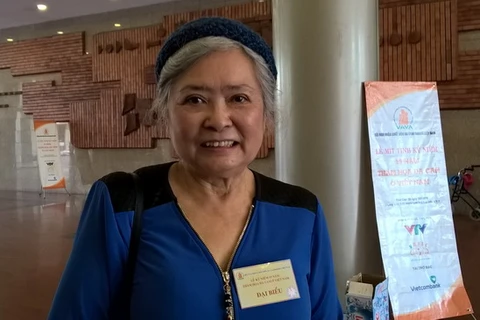Vinh Long (VNA) – President of the Vietnam Association of Victims of Agent Orange (VAVA) Nguyen Van Rinh has urged the association’s chapters at all levels to seek new ways to mobilise more support for AO victims.
During a working session with authorities of the southern province of Vinh Long on September 14, Rinh urged the province to enhance the Party's leadership over the settlement of the consequences of toxic chemicals used by the US during the war in Vietnam, in line with the Party Central Committee Secretariat’s instruction.
The province should promote communication work to enhance public awareness of the AO disaster in Vietnam and the Party and State’s policies on dealing with its consequences, thus creating public movements to support the local AO victims, Rinh said.
Meanwhile, local representatives suggested the Government, the Ministry of Labour, Invalids and Social Affairs provide instruction on how to provide support to help those exposed to AO/dioxin without certified documents.
A comprehensive data of AO victims should be established to facilitate caring and support for the targeted group, they said.
Vinh Long is home to 6,560 victims to Agent Orange/dioxin, including over 3,200 children.
Nearly 1,400 war veteran and their children are alive AO victims, but only 1,264 of them benefit from social welfare.
From 2010 – 2015, the province mobilised 19.2 billion VND (864,000 USD) to support local AO victims. The amount covered building and repairing 150 houses, over 26,400 packages of gifts and health check-ups for over 20,000 people.
The province also has two social welfare facilities, accommodating disadvantaged children, including the disabled and AO victims.
From 1961-1971, US troops sprayed more than 80 million litres of herbicides - 44 million litres of which were AO, containing nearly 370 kilograms of dioxin - over southern Vietnam.
As a result, around 4.8 million Vietnamese were exposed to the toxic chemical. Many of the victims have died, while millions of their descendants are living with deformities and diseases as a direct result of the chemical’s effects.-VNA
























